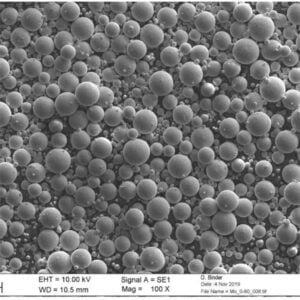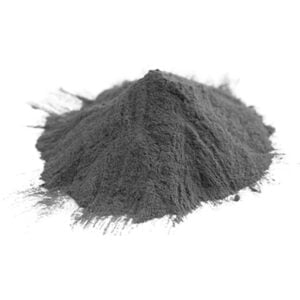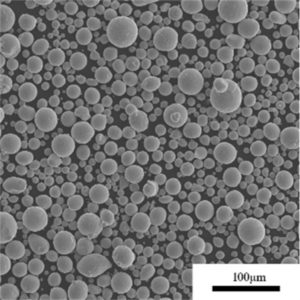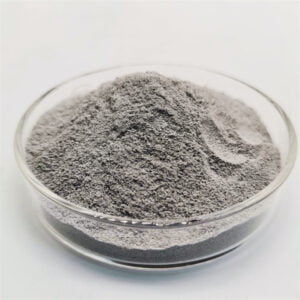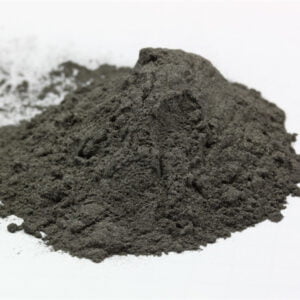Introduction to atomized powders
Table of Contents
Atomized powder is a type of metal or alloy powder made by atomization, a process where molten metal is turned into fine droplets that solidify into powder particles. This powder production method allows for precise control over powder characteristics like particle size, shape, and composition.
Atomized powders have become an important material across industries like automotive, aerospace, medical, 3D printing, and more due to their unique properties and capabilities. This article provides a comprehensive guide to atomized powder, including an overview of composition options, key properties, production methods, applications, specifications, selection criteria, major global suppliers, and frequently asked questions.
atomized powders Composition
Atomized powder can be produced from various metals and alloys with tailored compositions to achieve desired material performance. Common base materials used for atomized powder production include:
| Metal Material | Typical Alloying Elements |
|---|---|
| Aluminum | Silicon, magnesium, zinc, copper |
| Cobalt | Chromium, tungsten, molybdenum |
| Copper | Tin, zinc, silicon, chrome |
| Iron | Nickel, silicon, chromium, molybdenum |
| Nickel | Chromium, molybdenum, cobalt |
| Titanium | Aluminum, vanadium, iron |
| Tungsten | Copper, iron, nickel |
Alloying elements are added to achieve enhanced strength, hardness, wear resistance, high temperature performance, and other targeted material properties in the final atomized powder particles.
The most common alloy grades used for atomized powder include stainless steels, tool steels, nickel superalloys, titanium alloys, aluminum alloys, and cobalt alloys. Specific alloy names and standardized compositions are covered later in the specifications section.
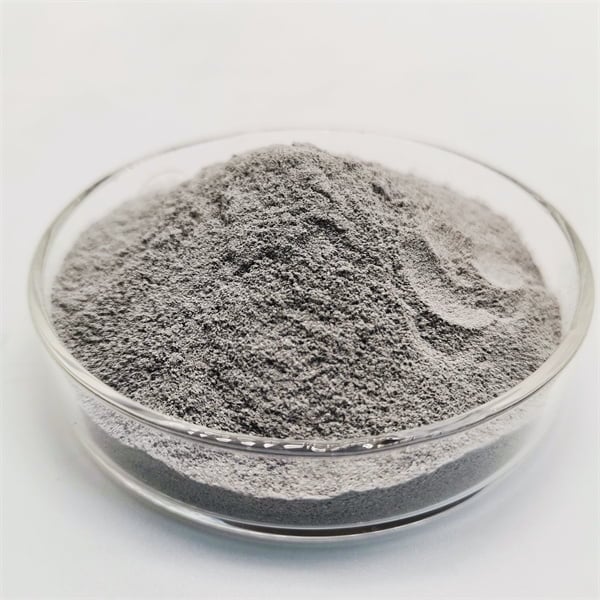
Atomized Powder Properties
Compared to conventional metal powders, atomized powders offer superior qualities thanks to precise production control over critical particle characteristics:
| Property | Description |
|---|---|
| Particle shape | Highly spherical morphology from specialized gas or water atomization |
| Particle size | Consistent narrow distribution from around 10 microns to 150+ microns |
| Chemistry | Uniform composition with minimal contamination |
| Density | Fully dense powder structure unlike porous alternatives |
| Surface oxide | Controlled low oxide layer thickness |
| Flowability | Free flowing particles with good handling and packing density |
These enhanced powder characteristics directly translate to benefits in terms of final part quality and consistency when using atomization-based metal 3D printing or powder metallurgy shaping processes:
- Improved mechanical properties – Higher density and optimized alloy chemistry
- Increased precision – Consistent particle size aids uniform layer spreading
- Reduced porosity – Spherical morphology packs better with less voids
- Superior surface finish – More uniform powder distribution, less contamination
- Better dimensional accuracy – Consistent shrinkage and distortions
By leveraging precise control over powder production, atomization allows significant advantages over less controlled equivalents like gas atomized, plasma atomized, electrolytic, and sponge iron powders when performance matters.
Atomized Powder Production Methods
There are two primary techniques used to produce atomized metal and alloy powders with specialized equipment:
Gas Atomization Process
Inert gas like nitrogen or argon is used to turn a thin molten metal stream into finely dispersed droplets. As the droplets cool and travel in a tower chamber, they solidify into spherical powder particles collected at the bottom. This is the most common atomization method allowing cost-effective commercial volumes.
Typical gas atomized powder characteristics:
- Particle sizes between ~20-150 microns
- Medium particle shape sphericity
- Moderate cooling rates alter alloy grain structure
- Batch sizes over 100 kg
Water Atomization Process
Using high pressure water jets, a molten metal stream is broken into fine droplets which rapidly quench into solid particles upon contact. This produces the most spherical powder morphologies but is more expensive.
Typical water atomized powder characteristics:
- Particle sizes between ~10-100 microns
- Very spherical particle shape
- Faster cooling alters metallurgy and improves alloy consistency
- Lower production volumes per batch
In terms of capabilities, gas atomization excels for large volumes while water atomization provides superior quality despite higher costs. Particle size range also shifts lower with water atomization, enabling finer resolution powder bed printing.
Applications of Atomized Powder
Thanks to the enhanced consistency and properties possible, atomized powders are utilized across major high-performance manufacturing methods:
| Process | Benefits | Industry Examples |
|---|---|---|
| Metal additive manufacturing (3D Printing) | – High precision layered metallurgy – Custom alloys and geometries – Reduced machining requirements | Aerospace, automotive, medical |
| Metal injection molding | – High complexity consolidated parts – Extensive range of alloys | Industrial, electronics, firearms |
| Hot isostatic pressing | – Fully dense consolidated components – Large complex parts – Alloy flexibility | Aerospace, energy, automotive |
| Thermal and cold spray coatings | – Wear resistant surfaces – Dimensional restoration – Corrosion resistance | Oil & gas, chemicals, infrastructure |
For metal additive in particular, atomized powders match the stringent requirements in terms of powder spreadability, particle fusion, metallurgical consistency, and final part mechanical performance. Leading powder vendors work closely with 3D printer OEMs to customize alloys and particle characteristics specifically for printing needs.
Atomized Powder Specifications
Atomized powders for commercial use must meet certification standards for chemistry, particle size distribution, shape and flow characteristics. Key powder specifications cover:
| Parameter | Typical Specification |
|---|---|
| Alloy grade | ISO, ASTM, AWS alloy designations |
| Chemical composition | Element percentages by weight |
| Particle size distribution | D10, D50, D90 micron measured by laser diffraction |
| Particle shape | Sphericity on 1-5 scale by microscopy |
| Powder flow rate | S in s/100g measured by Hall flowmeter funnel |
| Apparent density | Measured in g/cm3 by Hall flowmeter |
| Tap density | Measured in g/cm3 after mechanical tapping |
These powder characterization tests ensure batch-to-batch consistency and help quantify processability. Customized specifications are possible for attributes like particle size distribution and bespoke alloy target chemistries.
Common standardized alloy grades used for atomized powders include:
Stainless Steels
- 316L, 304L, 17-4PH, 420
Tool Steels
- H13, M2, M4
Superalloys:
- Inconel 625, 718, MP1
Titanium Alloys:
- Ti6Al4V
Aluminum Alloys
- AlSi10Mg
Cobalt Chrome
- CoCrMo
Special atomized powder variants like plasma atomized nickel superalloys and titanium alloys with extra-fine particle sizes down to 15 microns are also available for demanding applications like turbomachinery and medical implants.
Atomized Powder Selection Criteria
Choosing the right atomized powder depends on your production process requirements and desired final part properties:
| Consideration | Key Decision Factors |
|---|---|
| Additive manufacturing | – Particle size range based on printer model – Sphericity for powder spreading – Alloy mechanical properties at temperature – Designed for low porosity and anisotropy – Chemistry to limit volatile elements |
| Metal injection molding | – Powder impurities to prevent clogging – Alloy fluidity in molten state – Controlled particle shape and size distribution |
| Thermal spray | – Powder suitability for plasma/combustion heat sources – Deposit chemistry, density, bond strength – Flow through spray injection nozzle |
| Hot isostatic pressing | – Spatial uniformity of consolidation – Final part mechanical properties – Chemistry control for corrosion resistance |
| Cold spray | – Particle deformation on impact – Deposit pore and crack elimination – Bonding within alloys family |
Selection involves matching powder size ranges and fractions to optimal hardware specifications plus consideration of factors influencing final part quality like impurities, spreading behavior, alloy fluidity, microstructures, and more.
Global Suppliers of Atomized Powder
Leading international suppliers known for high quality gas and water atomized metal alloy powders include:
| Company | Headquarters | Capacity | Notable Features |
|---|---|---|---|
| Sandvik Osprey | UK | 10,000 tonnes per year | Spherical gas atomized powders with in-house alloy R&D |
| Hoganas | Sweden | 50,000 tonnes per year | Complete metal powder product range |
| Praxair | USA | 15,000 tonnes per year | Market leading quality standards |
| Erasteel | France | 20,000 tonnes per year | Narrow size distribution powders |
| TLS Technik | Germany | 10,000 tonnes per year | Custom alloys for additive manufacturing |
| AMPS | South Korea | 3,000 tonnes per year | Spherical water atomized nickel superalloys |
These leading metal powder producers offer extensive material options including stainless steels, low alloy steels, tool steels, superalloys, and aluminum alloys tailored to industrial production needs. Both stock alloys and custom alloy development services are available.
Besides major corporates, specialty metal 3D printing service bureaus and contract manufacturers also produce niche alloy grades fine-tuned for printing performance. Pricing varies based on buying volumes, exotic compositions beyond standard grades, and additional powder characterization requirements.
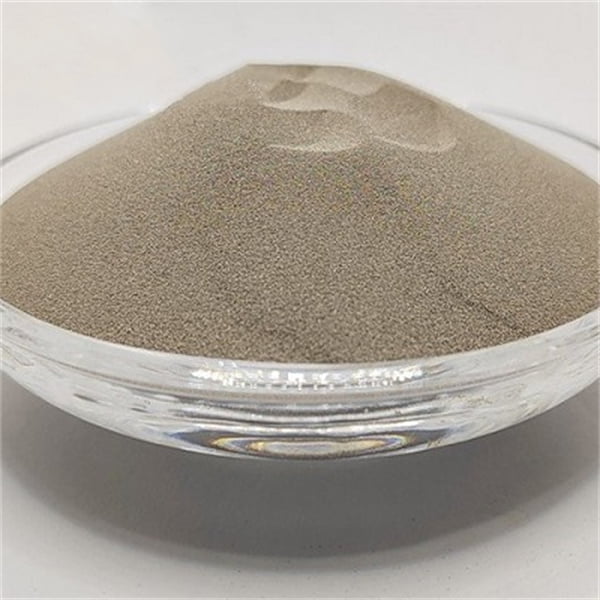
FAQs
What is the difference between gas and water atomized powders?
- Gas atomization is more cost effective, offers larger volumes and moderate particle shapes. Water atomization provides superior powder sphericity and cooling rates despite higher price.
What are the benefits of atomized powder over other metal powder production methods?
- Key advantages are precise particle characteristics like size control, shape consistency, alloy uniformity and cleanliness helping manufacturability and performance.
What is plasma atomization and how does it compare?
- Plasma atomization uses hot ionized gas giving finer control and smaller particle sizes. But throughput is lower and cost is far higher versus standard gas atomization.
What is the effect of atomized powder particle size distribution?
- Tighter distributions improve powder bed density and provide consistent melting. But some fraction of fines helps printability too. Optimal blends target specific printer settings.
How to determine if an application needs gas or water atomized powders?
- Component requirements around accuracy, surface finish, alloy consistency and properties drive selection. For most applications, moderate gas atomized powder performs sufficiently at better economics.
What is the typical lead time for purchasing custom atomized powders?
- Custom gas atomized powders take ~8-12 weeks with order sizes over 1000 kg. Small batches ~100 kg of specialty alloys can be delivered within 4-6 weeks.
How sensitive is atomized powder pricing to raw material costs?
- Base alloying element prices account for 40-60% of overall powder costs for common stainless and tool steel grades. More specialized superalloys are less volatile.
What is the typical shelf life of sealed atomized powders?
- In nitrogen-purged containers stored cool and dry, gas atomized powders last over 1 year while water atomized powders remain stable for ~6 months before requalification.
Atomized powders produced via specialized gas or water atomization processes offer game-changing material and performance consistency for metal additive, powder metallurgy, thermal spray, and other powder-based manufacturing technologies with stringent chemistry and particle characteristic requirements.
Share On
MET3DP Technology Co., LTD is a leading provider of additive manufacturing solutions headquartered in Qingdao, China. Our company specializes in 3D printing equipment and high-performance metal powders for industrial applications.
Inquiry to get best price and customized Solution for your business!
Related Articles
About Met3DP
Recent Update
Our Product
CONTACT US
Any questions? Send us message now! We’ll serve your request with a whole team after receiving your message.

Metal Powders for 3D Printing and Additive Manufacturing
COMPANY
PRODUCT
cONTACT INFO
- Qingdao City, Shandong, China
- [email protected]
- [email protected]
- +86 19116340731






